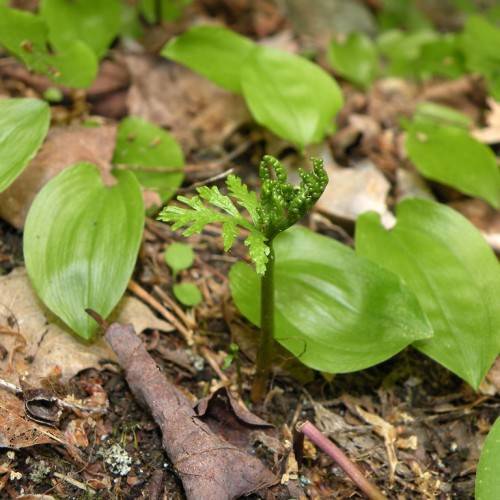
Narrow Triangle Moonwort
Botrychium lanceolatum subsp. angustisegmentum
Watering:
Minimal
Hardiness Zone:
Sun:
full sun,part shade,full shade
Leaf:
Yes
Growth Rate:
Low
watering
Triangle Grape Fern should be watered at least 1 time a week. Generally, it is best to water the plant when the soil is dry to the touch, usually at least an inch or 2 down. To ensure deep watering, it is recommended to water the plant slowly and deeply for at least 5 to 10 minutes, allowing the water to run through the soil and out the bottom of the container. During particularly dry weather, more frequent watering may be necessary. When adding water, be sure to avoid the crown of the plant and to water near the edge of the container instead.
sunlight
Triangle Grape Ferns require moderate amounts of sunlight and need to be placed in an area with bright, indirect light. The species does best in partial shade where it can receive a few hours of direct morning sunlight and filtered light for the remainder of the day. During the summer months, the Triangle Grape Fern should be protected from afternoon sun, which may cause its leaves to become scorched or discolored.
pruning
Triangle Grape Ferns should be trimmed with sharp, sterile pruning shears to maintain their attractive, fan-shaped foliage. Prune these ferns in early spring and early autumn to remove any dead or browning leaves and keep them looking their best. For heavier pruning, such as removing old, dying fronds, or shaping the fern, it is best to stick to late winter and early spring.
